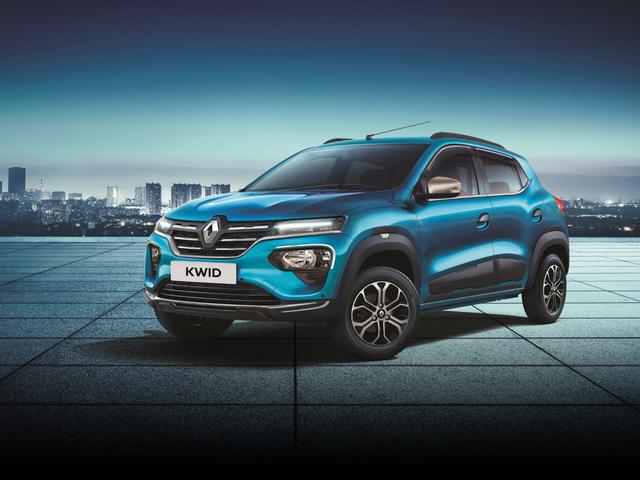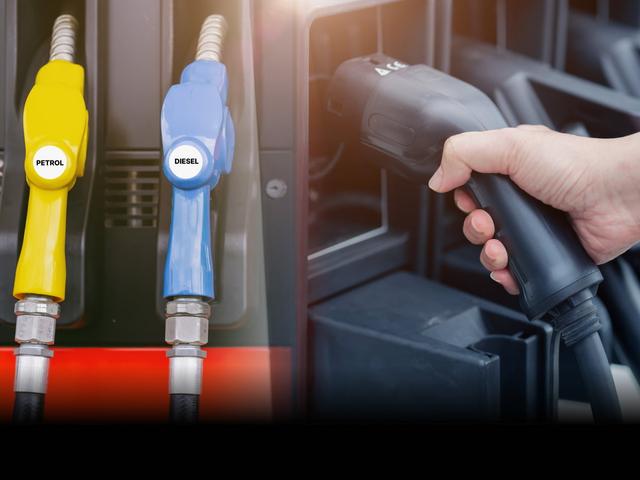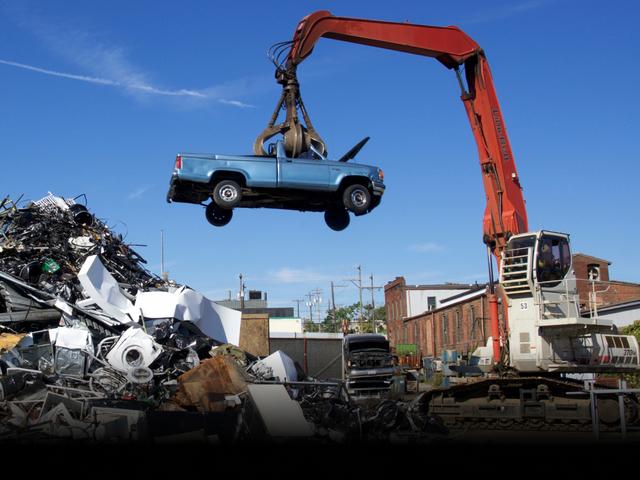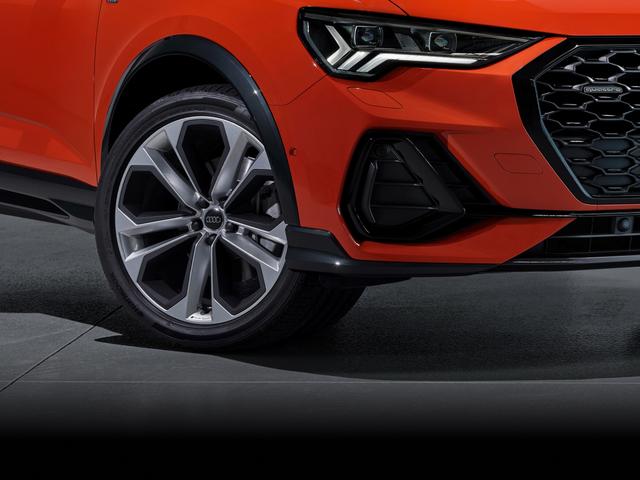


Blink blink !
Its almost here


New Vehicle Scrappage Policy in India : What to Expect
- 1The older scrappage policy targeted older vehicles, wasn’t planned well
- 2Under review to take into account pollution potential, not just age of vehicle
- 3Govt. wants to consider vehicle fitness and pollution potential before scrapping
When the government announced the 2021 scrappage policy, the aim was clear: curb pollution by taking older, more polluting vehicles off the road. Further, the goal was to incentivise scrapping to drive new vehicle sales. The scrappage policy lacked clarity in key aspects, namely the mandatory fitness tests that were prescribed for private vehicles older than 20 years and commercial vehicles older than 15 years. Now it is said the government is reviewing the 2021 scrappage policy to take into account the pollution potential of a vehicle according to the pollution norms it adhered to and not just its age.
If you’re wondering what this means, how it affects your vehicle ownership and future vehicle purchases, this article should help clear things up. We’ll look at what a vehicle’s pollution potential is, how it can be tested, and what are the other aspects of a vehicle’s fitness that contribute to its roadworthiness in the long run.
Join the official CARS24 auto community CLUTCH to stay up to date with industry news, discussions and more.
What is India’s vehicle scrappage policy?
.jpg)
Announced in 2021, India’s scrappage policy was squarely targeted at older vehicles to get unfit, polluting vehicles off the road and into the scrap yard. Specifically, it targeted private vehicles over 20 and commercial vehicles over 15 years of age. The scrappage policy mandated a fitness test for these older vehicles, failing which the vehicle would be scrapped.
At the time, the government had made suggestions for fitness centres where these fitness tests would be carried out. Scrappage centres were also set up, and auto manufacturers were asked to incentivise customers to scrap their old car in exchange for a new vehicle and between a 1 to 3 percent discount as a bonus.
What are the drawbacks of India’s scrappage policy?

To begin with, the 2021 scrappage policy did not lay down the framework for the mandatory fitness tests — what the fitness test meant, what fitness entailed and how it was different from current fitness renewal tests. Without this in place, vehicle owners would be at the mercy of these fitness centres’ discretion.
Further, the 2018 ruling where banning diesel/petrol cars older than 10/15 years of age respectively from plying on Delhi NCR roads has made things even more harrowing for vehicle owners in the capital. Several owners of vehicles older than the prescribed age have had their vehicles forcibly removed from private property and sent for scrapping. In this case, vehicle owners were at the mercy of whatever third-party agency was in charge of collecting older vehicles.
The argument of the common vehicle owner still stands: if a vehicle is older than 10/15/20 years of age but has been maintained well and doesn’t pollute, why should it be scrapped? The scrappage policy didn’t take into account the general operating condition of the vehicle either, something most other countries do with their own versions of vehicle fitness tests.
If the main aim of the scrappage policy was to reduce vehicular pollution, then the policy could fall short. The combined greenhouse emissions from scrapping a perfectly running car and the production of a new car to take its place would be higher than the running emissions of the vehicle. If the old vehicle met prescribed pollution norms and was reasonably efficient while at it, it would be less polluting overall to continue to run the vehicle on the road instead of scrapping it. Not to mention it would save the vehicle owner a significant chunk of money.
However, if the main aim of the scrappage policy is to reduce India’s steel imports, and lessen dependence on crude oil imports by pushing consumers to electric vehicles and hybrids, then that’s a different game altogether.
How the new scrappage policy aims to work
Anurag Jain, Secretary, Ministry of Road Transport and Highways has said that the government is reviewing the 2021 scrappage policy to take into account the pollution potential of a vehicle instead of just its age. With this, the government may look to enforce an upper limit based on the pollution technology a vehicle last adhered to, for example BS1 or BS2 instead of the 10/15/20-year age limit.
Union Minister Nitin Gadkari had previously appealed to auto manufacturers to increase the discounts related to the scrapping of old vehicles in exchange for new vehicles. These discounts from manufacturers only go up to a few per cent and haven’t really provided the right kind of incentive for owners to scrap their old vehicles. For the majority of car owners, if their car is maintained well and running efficiently and within prescribed pollution limits, there isn’t reason enough to bear the significant expense of a new car.
It is also reported that the government is looking for ways to make pollution certificates more trustworthy. Currently, a Pollution Under Control certificate is issued for new cars with a validity of up to one year, with renewal intervals between every six months to 12 months. The PUCC certifies that a vehicle’s emissions comply with the norms.
Drawbacks of current pollution tests
Currently, the biggest drawback of current pollution and fitness tests is that there’s improper enforcement. The PUC tests can be cheated, either through outright manipulation of the PUC certificate or by manipulating the test itself.
The pollution tests for vehicles usually measure CO (carbon monoxide), NOx (oxides of nitrogen), HC (hydrocarbons), and PM (particulate matter). India has been following the equivalent of Euro emission norms over the years, and has almost caught up with the latest norms followed internationally. The Bharat Stage VI norms enforced from 2020 are equivalent to Euro 6 enforced internationally in 2017. The next phase of Euro 6d-Temp, Euro 6d and RDE have been implemented in many countries. Euro 7 standards are expected to come into force mid-2025 internationally.
For context, BS1 norms allowed for CO readings between 2.72-6.90 g/km and HC+NOx readings between 0.97-1.70 g/km. In contrast, the latest BSVI norms allow for CO readings up to 1 g/km for petrol and 0.5 g/km for diesel. In addition, HC limits are 0.1 g/km, NOx is 0.06 g/km and PM is 0.00045. The sulphur level allowed is just 10ppm, magnitudes less than BS2’s 500ppm limit. As you can see, there are huge differences in allowed limits between the older pollution norms and the current norms.
The issue is that not every old vehicle would have exceeded those early pollution limits then and probably don’t exceed them now either. In fact, older petrol vehicles that have been maintained well could come close to matching current emission norms.
Drawback of proposed scrappage tests
If one were to consider a scenario where an old vehicle meets or exceeds older pollution norms and is cleaner than the norm suggests, then outlawing it based on the pollution norms it was designed to meet would again lead to issues. A BS1 or BS2 vehicle could easily surpass BS4 norms based on its maintenance over the years.
Currently, a fitness certificate (FC) issued for new cars in India is valid for 15 years. FC renewal can be done for five additional years at a time once the 15-year mark is passed. The current FC renewal process takes place at the RTO where the presiding officer will inspect a vehicle’s physical and mechanical condition and issue the FC renewal pass status. Once again, with FC renewal, it is possible with the right contacts to circumvent the legal process.
Solutions for proposed scrappage tests and fitness norms

Since the government is taking the common man’s feedback into account finally, it will pay to have a pollution and fitness-related test laid out to give these older vehicles a chance to survive if taken care of well. India only has to look to other countries globally — older vehicles are required to be tested every year to ensure that they are safe to be used on the road. These tests take into account all roadworthiness functions of a vehicle, as well as exhaust emissions and noise limits.
It would work well for India to follow a similar system, as initially proposed with the fitness centres. Similar to the thorough examination that CARS24 performs for every used car that comes through the doors before listing, these fitness centres will need to make sure every old vehicle can cross off an exhaustive checklist before being deemed fit for road use.
FAQs
Q. What is the latest scrappage policy in India?
Currently, the scrappage policy in India is targeted at older, more polluting vehicles which require them to pass a mandatory fitness test or be scrapped.
Q. Can we use a car after 15 years in India?
Yes, you can use a car after 15 years in India. Only Delhi NCR places limits on age of vehicle due to the NGT ruling banning vehicles older than 10 years of age for diesel and 15 years of age for petrol.
Q. Are 15 year old cars banned in India?
No, 15 year old cars are not banned in India. This restriction only applies to Delhi-NCR.
Q. What is the new vehicle scrap policy in 2024?
The vehicle scrap policy in 2024 is the same as the 2021 proposed scrappage policy. This means that private vehicles older than 20 years of age need to pass a mandatory fitness test. Any vehicle that fails the test is considered an end-of-life vehicle and its registration stands as cancelled.


Blink blink !
Its almost here













.jpg&w=640&q=75)









Blink blink !
Its almost here











